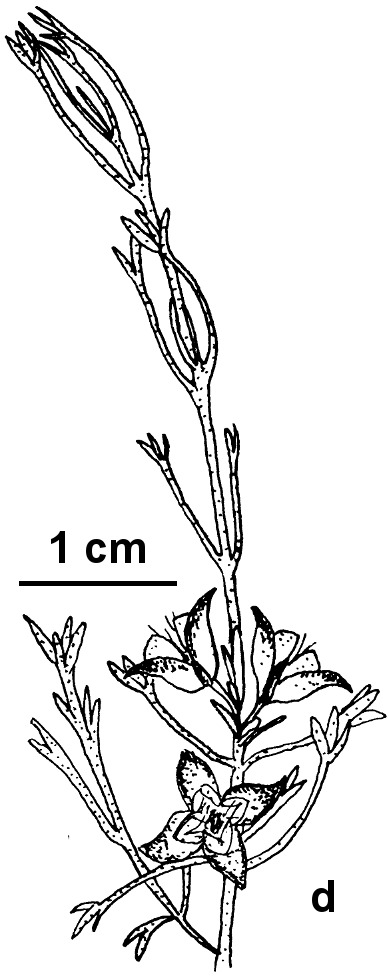Cyanothamnus anemonifolius subsp. aurifodinus
(P.G. Neish) Duretto & HeslewoodShrub to 1.2 m high; branches glabrous or hirsute between decurrent leaf-bases; leaves usually simple with trifid tips or sometimes trifoliolate, 5–15 mm long, 0.5–2.5 mm wide (to 6 mm wide if trifoliolate), glandular; leaflets terete or plane, very narrow-cuneate to 3 mm long (0.5–2 mm wide if leaf compound); petiole 3–7 mm long, longer than leaflets in trifoliolate leaves. Inflorescence (1–)3(–6)-flowered; peduncle 3–4 mm long. Sepals 1.5–2.5 mm long, glabrous to indumented, c. one-third as long as petals; petals 5–6 mm long, glabrous to glabrescent, persistent. Flowers spring.
Wim, VRiv, Gold, CVU. Apparently endemic in mallee communities between Bolangum (north of Stawell) and Rushworth.
Some plants in these populations have trifoliolate leaves (as in subsp. anemonifolius) for a few nodes only. The taxonomic significance of this feature warrants further investigation.
Duretto, M.F. (1999). Rutaceae. In: Walsh, N.G.; Entwisle, T.J., Flora of Victoria Vol. 4, Cornaceae to Asteraceae, pp. 153–197. Inkata Press, Melbourne.
 Spinning
Spinning